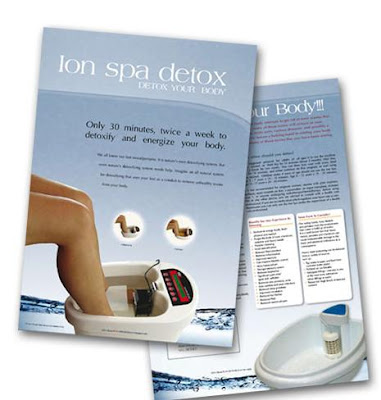
A brochure or pamphlet is a leaflet advertisement. It is a fancy booklet that differs from an ordinary booklet in that it is constructed of heavier quality paper, uses extensive color and expensive type, and is generally put together with special care. The name originates from the French verb brocher, meaning, "To stitch" indicating a booklet bound by stitching, although today other binding methods are also used. It can be used for advertise locations, events, hotels, products, services, etc. These are frequently part of a retail advertising campaign and are sometimes distributed with the Sunday papers.
Type of Brochures
Leave-Behinds - Named for the type of brochure you leave behind after meeting a potential customer.
Point-of-sale - The type of brochure you may pick up while waiting in line at the bank.
Respond to Inquiries - Someone asks about a specific product and you drop a brochure in the mail to them to follow up.
Direct Mail - Your sales letter sells but you can also include your brochure into your direct mail package.
Sales Support Tool- Similar to leave-behinds but you uses this type as a selling aid through a sales pitch.

Brochure Styles
Two of the most common brochure styles are single sheet and booklet forms.
A common single sheet brochure is double-sided (printed on both sides) and folded into thirds mostly in “Z-fold" or in the "C-fold" method. Larger sheets are folded into four, five, or six panels.
Booklet brochures are made of multiple sheets mostly saddle stitched (stapled on the creased edge) or "perfect bound" like a paperback book.
Points Need to Know Before Brochure Printing
For professional designing brochure these are some points that should be considered.
Know Your Print Size
Be very care full with Print layout. Don’t submit bigger layout for printing on smaller papers, like an 8.5 x 11 layout on 8x10 paper.
Allow for Bleed
Brochures are printed together in sheets, and then sliced into single units. Cutting thousands of pieces can fluctuate slightly over the course of the order. Brochure should be designed with an extra 1/8th inch of coverage beyond each edge.
Resolution is Key
Using high-resolution images is a critical step for creating professional looking brochure. With Improper resolution, images will come out ‘soft’, blurry, or even pixilated. The images on computer monitor are only 72 dpi (dots-per-inch), fine for viewing on a monitor, but very inadequate for a professional-looking printed brochure. Images should be at least 300 dpi to print clearly with full sharpness.
Select the Correct Paper
Using an appropriate paper may convince a potential customer that you are more professional than your competitors.
Be Original and be Creative
Carefully consider what information are you trying to convey? Remember, the front of your brochure is that all people will see when scanning display racks, so make sure the front of your brochure is appealing.
Use Proper Color Settings for Your Brochure
Computer monitor displays colors in RGB format. The colors appear exceptionally brilliant, because they are being electronically illuminated. However, printing presses use the CMYK coloring format.
Design must be create in CMYK color AND the resulting send to the printing service must also be created using CMYK color.
About the Author: Natasha is the expert writer working for http://www.emanprinting.com and http://www.emanprinting.co.uk
Source: http://www.isnare.com
Permanent Link: http://www.isnare.com/?aid=283991&ca=Marketing


